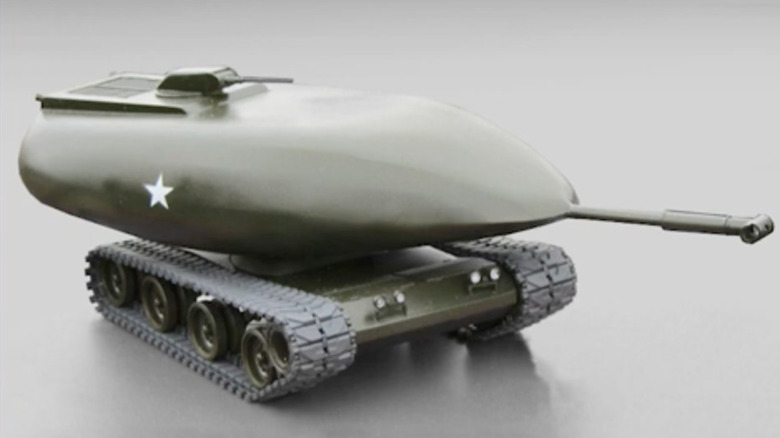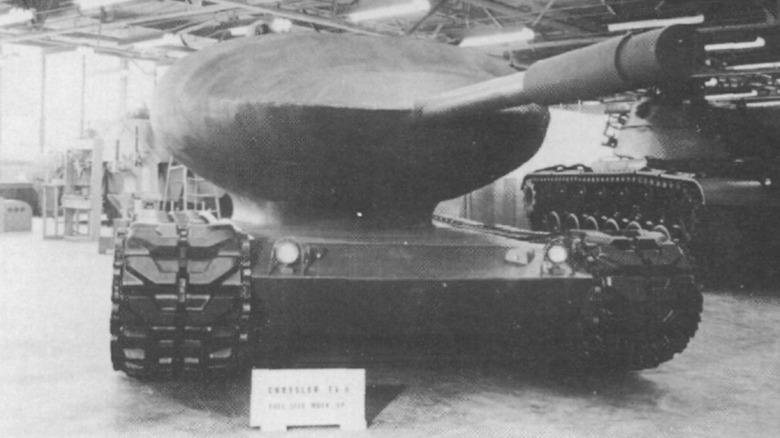The Story Behind Chrysler's Nuclear Tank That Never Was
Looking at the current struggle to supply fuel to tanks in Ukraine's war with Russia, it's easy to see why nuclear power for combat vehicles held tremendous appeal at one time. Imagine a fuel source which virtually never requires replenishing: a nuclear-powered weapon that could operate continuously on the battlefield without the logistical nightmare of providing a pipeline of diesel fuel or gasoline.
In the 1950s, the U.S. government was splashing money around for all sorts of nuclear projects, including aircraft, submarines, and even a massive 600-foot long cargo and passenger ship. Automaker Chrysler — which had previously dabbled in tank design and would eventually score a hit with the M1 Abrams — proposed a nuclear tank called the TV-8 as part of its ASTRON projects, which encouraged creative thinking and "outside the box" design.
Even without discussing its unconventional powerplant, the TV-8's overall design was unique in its own right. Everything — crew, engines, and spare ammunition — was contained within the tank's rounded turret, a shape thought to better deflect incoming artillery shells than traditional flat armor. The lozenge-shaped turret was mounted atop a lightweight chassis and the two pieces could be separated for ease of transport.
The combined weight of the turret and chassis was approximately 25 tons, which was stunning considering that a Sherman tank of the era weighed nearly double. The TV-8's light weight presented some unique opportunities, such as the ability to float and even propel itself through the water using jet drives, although it's unclear how far the development of the latter feature actually progressed.
The prototype was gasoline powered
Incredibly, Chrysler did manage to produce a functional prototype of the TV-8, with one very important caveat — it wasn't actually nuclear powered. Although the prototype did sport a pair of electric motors — identical to those intended for a nuclear-powered version — the electricity was provided by a conventional V8 engine and generator. Apparently, Chrysler wasn't ready to fully commit to messing with a nuclear reactor until the Defense Department signed off on the other design aspects of the TV-8.
Chrysler's decision to keep the atomic aspect of the TV-8 theoretical was a smart one, because the Army did not in fact adopt the design. During testing, it was determined that the wild TV-8 just didn't offer a significant advantage over more conventional tanks, including those already in service.
The fact that the TV-8 never made it past the gasoline-powered prototype stage poses some interesting questions. With the United States' victory of World War II and enjoying a robust post-war economy, how well thought out were the Army's spendy nuclear dalliances? Was consideration given to nuclear fallout affecting the tank's crew or surrounding area if the TV-8's reactor was damaged? Would there be a responsibility to recover disabled tanks to avoid potential long-lasting contamination?
We'll never know how well thought out the nuclear strategy was. In the ensuing decades, interest in nuclear-powered anything started to wane following a couple of high-profile power plant accidents like the Chernobyl disaster, and Three Mile Island in the United States.

